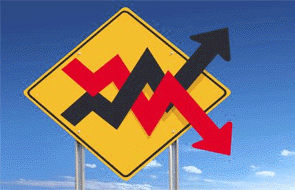
Will our interest rate curves 'invert'?
This is a question bond markets are now assessing now that the rate curve has essentially gone flat.
Westpac's Imre Spiezer has issued a note that suggests we may be in for maybe a year of inverted rates.
That is where long term rates are lower than short term ones.
Spiezer's note points out that historically, when our rates have fallen, they have generally flattened at the same time.
In fact, he also notes that this is not unique to New Zealand - "it is a universal and well documented relationship".
But he also points out that since September 2014, when the RBNZ signaled that rate rises are on hold, the rate curve has continued to flatten even though markets have priced out any remaining tightening.
And that is "historically rare", he says.
And in his view it has been caused by significant levels of capital inflow as the global search for yield picked up.
It should not be surprising given our real interest rates are among the highest in the "OECD world".

But does that mean these trends will push us to an inverted rate slope?
Not in the next few weeks, says Spiezer.
He points out that the RBNZ is likely to change its tone on Thursday from a tightening bias to a neutral one. And then markets will assume OCR cuts are more likely.
In turn, that will push down short term rates faster than long term ones, adding back some positive slope to the rate curves. The 2-10 curve is currently only about +10 bps and Westpac reckons it could reise to +30 bps.
But after that short term effect wear off, there is a real chance the relentless drive for yeild will overwhelm any inhibition of further falls.
The Japanese money printing program (and pushed along by the ECB's effort) will generate a flood that can't be stopped.
Risk aversion by global bond investors will see capital flows push our rates down and rate inversion is very likely.
Westpac's 'best guess' is that "a capital flow-inspired flattening could cause a negative curve to persist in NZ for some time, a year not implausible."

But that too will end, they point out.
Eventually, though, the curve will enter a long steepening cycle. One scenario (admittedly with a low probability) is the RBNZ starting an easing cycle. Another is global reflation causing investors to exit bond markets, pushing long maturity yields higher.
Whatever the catalyst is, we view any looming negativity in the curve as an opportunity for borrowers to extend hedges at a very low cost.
6 Comments
It should not be surprising given our real interest rates are among the highest in the "OECD world".
But does that mean these trends will push us to an inverted rate slope?
Not in the next few weeks, says Spiezer.
What part of this curve is not inverted versus spot rates if government funded debt is the given, according to the graph?
NZ Government Stock Index Summary
23-Jan-15
Coupon Maturity Date Yield Face Value
6.00 15-Apr-15 3.500 $7,660
6.00 15-Dec-17 3.285 $11,969
5.00 15-Mar-19 3.295 $11,813
3.00 15-Apr-20 3.325 $5,940
6.00 15-May-21 3.340 $11,914
5.50 15-Apr-23 3.365 $9,245
4.50 15-Apr-27 3.415 $3,300
In my simplistic view , Wheeler should cut the OCR to at least Aussie levels and use macro-prudential tools to manage any domestic overheating of property , equity , money and capital markets.
The Kiwi$ is too high and we are kidding ourselves about the reasons underlying the so-called economic boom .
Our so called boom is really the steriods we are on from the Chch rebuild and 1000 new migrants arriving every week , week after week after week as they pour in here relentlessly buying up our assets and looking for somehwere to live .
The strong $ and weak commodity prices are hurting exporters and the real productive economy.
Also , the strong $ is not benifitting everyone because its not feeding into the prices of many things , particluarly building materials.
A new house uses a tremendous amount of plasterboard and RIGHT NOW WE NOW HAVE THE MOST EXPENSIVE GIB / PLASTERBOARD ON THE ENTIRE PLANET BECAUSE THE LOCAL MANUFACTUER HAS SECURED 40% TARRIFF PROTECTION.
Its effectively a state assisted monopoly with a 40% pricing premium
Kiwis just pay
Its simply wrong on every level .
We need to ask WHY ?
@Boatman.....I didn't think we had tarrifs on products in New Zealand although I have experienced extremely expensive building materials. Can you further explain the 40% tarrif protection on plasterboard.
@ Appreciating assets , I did not think so either , but GIB which has 95% of the New Zealand market has NZ Govt . tarriff protection from GYPSUM's Thailand factory .
The product is either sold as Rhino or Elephant by the Thai operation and is exported everywhyere ....... except here .
For those of us who have lived and or worked in the UK will know Gypsum is one of the worlds biggest and oldest plasterbaord Companies .
http://www.stuff.co.nz/business/industries/65449448/nz-dollar-hits-fresh-threeyear-low-ahead-of-rbnz
Cuts are now anticipated by the markets.
With regards to tarriff protection received by GIB , Allegedly , the Thais were :-
1) Dumping the plasterboard product here
2) It was allegedly inferior , and unsuited to NZ wet conditions
Both of these alleagtions are a convenient distorition of the truth
1) The Thai govt has export incentives which make it cheaper to epxort it THAN SELL IT LOCALLY
and
2) The product is the same quality as the British product made by the parent Co, Gypsum Industries , and England as we all know is wetter and muddier thatn here

We welcome your comments below. If you are not already registered, please register to comment.
Remember we welcome robust, respectful and insightful debate. We don't welcome abusive or defamatory comments and will de-register those repeatedly making such comments. Our current comment policy is here.